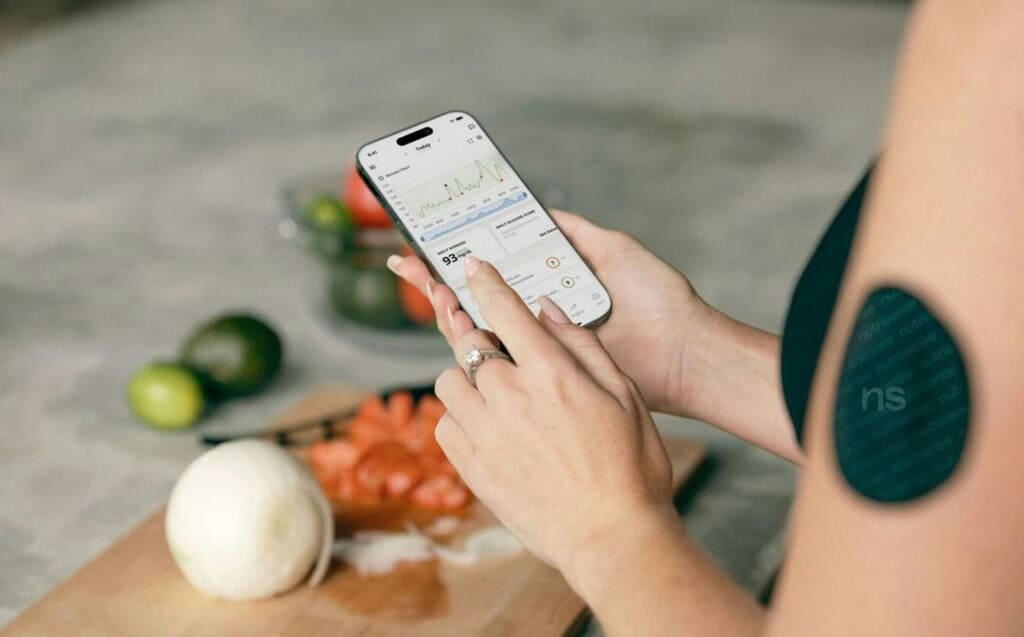
It’s genuinely incredible how technology has woven itself into almost every fabric of our lives, and now, it’s changing how we approach something as personal as what we eat. The accelerating influence of tech on personalized nutrition isn’t just a fleeting fad; it’s a seismic shift, redefining how we understand our bodies and fuel them. For anyone involved in nutrition app development, staying ahead of these trends isn’t merely a strategic advantage—it’s an absolute necessity. The market for nutrition technology is booming, driven by an insatiable demand from users for insights that are tailored, timely, and actionable. People aren’t just looking for calorie counters anymore; they crave bespoke dietary roadmaps powered by cutting-edge science and seamless integration.
AI-Powered Personalization and Meal Planning
Forget one-size-fits-all diet plans. We’re moving light-years beyond that, thanks to the sheer power of Artificial Intelligence. AI, particularly through machine learning and sophisticated Large Language Models (LLMs), is the actual driver behind hyper-personalized meal plans that feel as though they were designed just for you. Imagine an app that doesn’t just suggest a recipe but considers your unique genetics, activity level, and even your current mood to recommend what to eat next. We’re already seeing evidence of this, with systems like NutriGen LLM optimizing gut health outcomes by analyzing vast datasets and tailoring dietary advice with unprecedented precision. These AI nutrition programs aren’t just about counting macros; they’re about understanding complex biochemical interactions within your body, guiding you toward optimal wellness in a way that was previously not feasible.
Wearables and Real-Time Nutrient Tracking
Our bodies are becoming increasingly connected, constantly streaming data, and nutrition apps are eagerly tapping into this rich vein of information. The integration of nutrition apps with wearable devices and the Internet of Things (IoT) is revolutionizing how we track our consumption and how our bodies respond. Think of continuous glucose monitors (CGMs) providing you with immediate feedback on blood sugar spikes after meals or smart kitchen sensors that log ingredients as you cook. Even motion data from your smartwatch can inform nutrient recommendations. Examples like MealMeter, which uses multimodal sensing to paint a comprehensive picture of your dietary intake, are pushing the envelope.
Microbiome and Genomics-Based Insights
The future of nutrition is deeply rooted in our biology—specifically, in our genetic makeup and the unique ecosystem of microorganisms living in our gut. This trend involves leveraging genetic tests, microbiome profiling, and advanced blood markers to provide truly personalized nutrition advice. We’re seeing fascinating studies that demonstrate how personalized AI programs can profoundly impact an individual’s gut microbiome composition, potentially leading to improved digestion, enhanced immunity, and a better mood. Startups are emerging, pioneering personalized nutrition plans that utilize DNA and gut bacteria analysis to recommend specific foods, prebiotics, and probiotics.
Computer Vision & Photo-Based Food Logging
Let’s be honest: manually logging every single item you eat can be a real drag. It’s time-consuming, prone to errors, and can lead to app abandonment quickly. But what if your phone could “see” your food and do the heavy lifting for you? That’s precisely where computer vision (CV) comes in. This cutting-edge technology is transforming food logging from a chore into a seamless experience. Imagine snapping a photo of your meal, and the app instantly detects the food items, estimates portion sizes, and calculates calories and nutrients with surprising accuracy. Apps like Cal AI are leading the charge, utilizing advanced image recognition tools to improve logging accuracy drastically.
Behavioral Nudges, Gamification & Mental Health
Nutrition isn’t just about what you eat; it’s deeply intertwined with your habits, your mood, and your motivation. Future apps are leveraging behavioral science to guide users toward healthier choices in a gentle manner. This involves subtle “nudges”—small, timely prompts that encourage positive actions—and engaging gamification elements that turn healthy eating into a rewarding challenge. Imagine receiving mood-based food suggestions, where the app recommends specific foods that may boost your energy or calm your nerves based on your emotional state. We’re also seeing the rise of “tribal AI apps” that foster social accountability, allowing users to connect with like-minded individuals and support each other on their wellness journeys. The integration with mental health features enables nutrition advice to be cross-referenced with stress levels or sleep patterns, providing a holistic view of overall well-being.
Privacy, Data Security & Regulatory Compliance
With all this incredible personalization and data collection, a critical concern emerges: protecting personal health data. As nutrition apps become more sophisticated, integrating data from wearables, AI analyses, and even genomic tests, the responsibility to safeguard this incredibly sensitive information becomes paramount. Discussions around GDPR, HIPAA, and emerging regulatory frameworks, such as the EU AI Act, are becoming increasingly central to the development of diet and nutrition apps. Developers must move beyond mere compliance; they need to embed privacy by design into every layer of the app.

Key Future Nutrition Tech Trends
Here are some of the most exciting shifts defining the next wave of nutrition technology:
- AI-driven personalization with genomics & microbiome
- Real-time tracking via wearables & IoT
- Photo-based food recognition and logging
- Gamification and mood-informed dietary prompts
- Stringent privacy and compliance safeguards
Market and Adoption Forecasts
The future of nutrition apps isn’t just bright; it’s practically incandescent. Projected growth in this sector is nothing short of phenomenal, reflecting the intense global interest in health and personalized wellness. Industry analysts forecast that the nutrition apps market value will soar, exhibiting impressive Compound Annual Growth Rates (CAGRs) over the coming years. Adoption statistics paint a clear picture: more than 50% of upcoming nutrition apps are expected to incorporate advanced AI capabilities, transforming how users interact with their dietary goals. Furthermore, a significant portion, potentially up to 30%, will feature deep IoT connectivity, linking directly to wearables and smart kitchen devices. These figures aren’t just abstract numbers; they signify a burgeoning ecosystem where technology and nutrition converge to empower individuals like never before.
Preparing for the Future – Recommendations for Developers
For any aspiring nutrition app developer looking to make their mark, the path forward is clear, though it requires foresight and strategic investment. First, cultivate robust data partnerships with labs, wearables manufacturers, and even grocery retailers to access the rich, diverse datasets that fuel hyper-personalization. Second, commit to integrating sophisticated AI/ML tools into your core architecture; these aren’t optional extras but foundational components for competitive offerings. Third, prioritize seamless User Experience (UX) and bake privacy by design into every feature. Your app must be intuitive and trustworthy from day one. Fourth, rigorously test your Computer Vision models for accuracy across diverse food items and cultural cuisines. Finally, and crucially, don’t operate in a vacuum. Collaborate closely with healthcare providers, registered dietitians, and clinical researchers. Their expertise is invaluable in creating solutions that are not only technologically advanced but also scientifically sound and clinically effective.
Conclusion
As we pull back the curtain on the future of nutrition apps, a vivid picture emerges: highly personalized, data-rich, and undeniably AI-driven. These aren’t just minor upgrades; they represent a fundamental reimagining of how we engage with our diet and health. From understanding our unique genetic blueprints to tracking every bite in real-time and even anticipating our mood-based cravings, the next generation of nutrition technology promises an unprecedented level of individualized support. For nutrition app developers and healthcare stakeholders alike, paying close attention to these trends isn’t just about market relevance; it’s about being at the forefront of a wellness revolution.



